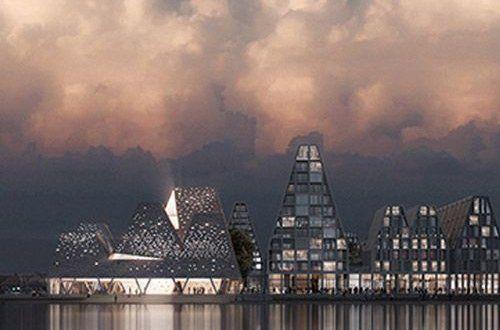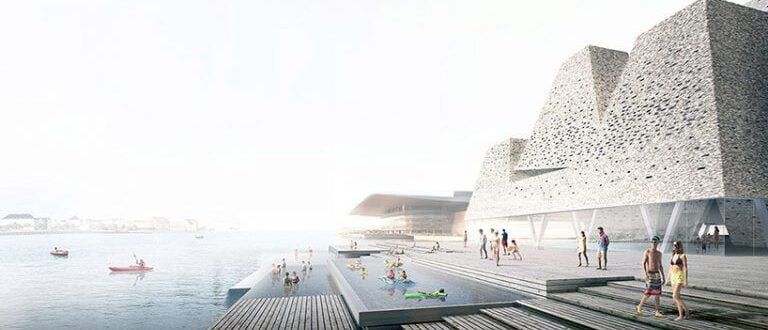
A Japanese company has won the first prize in the international competition for the design of the Waterfront cultural center, on the artificial island Paper Island, in Copenhagen. The company's desire is, through this design, to highlight the importance of water in the history, culture and urban life of Copenhagen.

The purpose of the Waterfront Cultural Center is to create an experience, not just a stand-alone object, in the form of a landscape where art and architecture come together to frame the water. The proposal offers a variety of experiences through water in many situations and conditions, such as the reflection of light and shadow, steam and flow that appeals to the human senses.

Integrated into a wider plan of redevelopment of the island, this architectural form consists of a series of pyramids that respond to the profile of the area. It does not have a single front side but many different faces, which make it recognizable and accessible from many directions. It offers a spontaneous, open and clear perception of the space, which brings to mind the lively and dynamic nature of today's Paper Island.

The transition from the interior to the exterior, on the ground floor of the structure, is designed to be done in one movement. It is shaped in steps that descend, creating a wide, continuous perception of the water's surface from the interior and all the way to the port. The design succeeds in softening and erasing the edges and blurring the sense of boundaries with land. A series of conical volumes, in various proportions created based on the sensation of the volume being pushed or pulled vertically and horizontally, creates unique experiences. The conical shapes on the roof help to separate the pools in the ground floor space.

The material chosen to clad the structure is brick, thus emphasizing the quality and aesthetics of traditional Danish art. The proposal expresses the perspective of this material of small dimensions projecting it on the large scale of architecture. The many layers of opacity as well as transparency of the facade make the structure glow with the warm night light, even in the cold season of the year, when darkness lasts longer.



No Comments